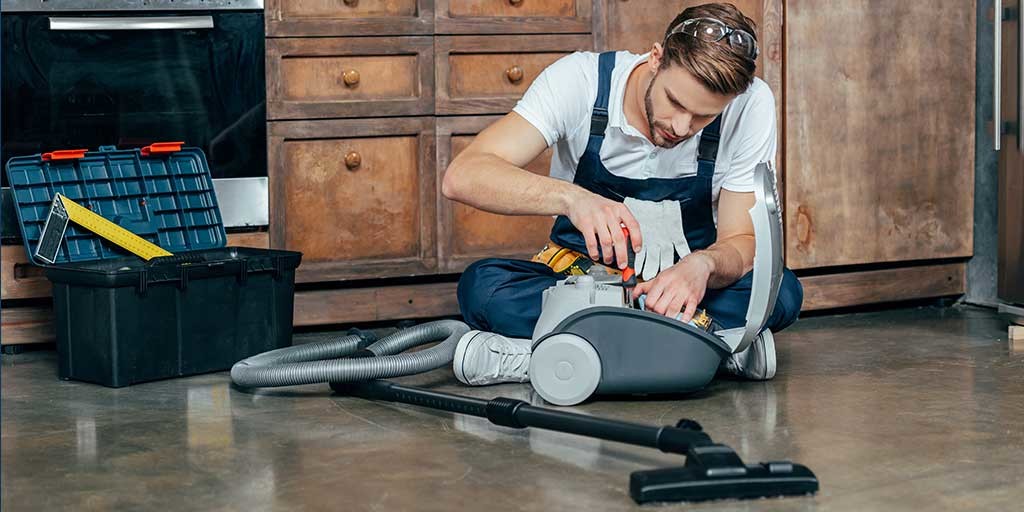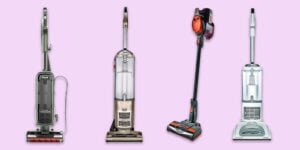All About Vacuum Warranties: What You Need to Know
After buying a new vacuum cleaner, you may think you’re ready to go once you’ve familiarized yourself with its features and attachments. But what about your vacuum’s warranty? Most of us just stuff the warranty document in that useful drawer with all the documents from our appliances. Reading these warranties can be valuable, as it offers valuable information as to how your new vacuum is covered.
This article explains the importance of the vacuum warranty to encourage us all to familiarize ourselves with this often overlooked statement.
What is a Warranty?
A warranty is a written guarantee that is issued to the purchaser of an article by the manufacturer and serves as an agreement to repair or replace it, if necessary, within a specified period of time.
Often manufacturers will claim a “Lifetime Guarantee,” which usually means the reasonable lifetime of a product. For example, it would be reasonable to expect a vacuum cleaner to last three years, so this may be the manufacturer’s expectation of a “lifetime” of the product. Legally, a warranty and a guarantee are much the same thing. When it comes to consumer rights, however, there is such a thing as an “Implied” warranty, which basically assumes that the product is guaranteed to work as typically expected. If it doesn’t, the implied warranty comes into force.
Most warranties tend to be three or five years, so if there is a malfunction with your vacuum, don’t worry, you’re covered. But what if the vacuum breaks down as a result of misuse? Warranties are typically upheld only if the unit is used correctly, so make sure to check the terms and conditions to ensure that your operations is within this “correct” range.
Reading your vacuum’s warranty can also be valuable. In that, you might find in the document that your vacuum might need to be registered to activate the warranty. Dyson models, for example, require you to log onto their website and activate the warranty. In fact, most manufacturers ask that the product be registered after purchase, though under the law, implied warranty kicks in after purchase. Given this, manufacturers tend to offer a standardized length of time – say, one year – to register your machine, and they typically incentivize it by offering perks for registration, like an extended coverage or access to exclusive discounts.
There are also some manufacturers that try to slip their way out of warranty stipulations, but there are ways you can safeguard adherence. One must-do is to keep your receipt, as it offers the ultimate proof of when you purchased the item and your related right to warranty coverage. In addition, if a manufacturer challenges the validity of your warranty claims, rest assured that the law is on your side (provided, of course, that you can prove your machine’s purchase date).
What do warranties cover?
There are usually two types of warranty on vacuum cleaners: the first covers parts and labor, and the second handles motors. Parts and labor covers you for defects in any of the moving parts that aren’t part of the motor and the cost of labor necessary to make the repair. Excluding the motor, there are few moving parts on the vacuum, so this warranty tends to be shorter in duration. Motors, however are usually given a longer warranty because of their relative complexity and higher chance of malfunction.
- Dyson
Dyson offers repair or replacement (at their discretion) for vacuums that have been used in accordance with their usage policy. They cover workmanship defects and faulty materials within their stipulated time period. They also provide a list of Dyson Service Centers on their website, so make sure you register with them for repairs and accessories.
It is important that you review your Dyson warranty as it does vary between models. Canister vacuums are usually more robust and so typically get a 5 year warranty, while the upright and stick models often get only 2 years. This reflects the design and quality of the unit and the life expectancy of the vacuum.
Dyson is fiercely protective of their reputation as a leading vacuum manufacturer, and they know that a satisfied customer is the greatest advertisement for their products. Dyson is so confident that their machine will perform, they allow the warranty of their models to be transferred between owners, assuming that you’ve registered it with the local Service Center and they verify that the vacuum was in good working order when the ownership was transferred. However, don’t take your Dyson abroad because that invalidates the warranty.
- Hoover
One of the oldest brands of vacuum cleaners in the world, Hoover are still a big deal when it comes to the U.S. and world markets. In fact, in the U.K, the name “Hoover” is so synonymous with the product that it has become the generic name given to all vacuum cleaners.
Hoover requires you to register your vacuum on their website to validate the warranty. Again, like Dyson, they offer all sorts of tips and information designed to help prolong the life of your vacuum. Hoover offers a blanket 12 month parts and labor guarantee on all its products, but individual vacuum cleaners have differing warranties. For example, the QuickLiftTM React Upright Vacuum cleaner comes with a limited 5 year warranty on parts and labor from the date of purchase. Hoover states that there is no cost to the customer if their product fails due to poor workmanship of materials.
Be careful, though, as Hoover insists that the vacuum has to be used in accordance with their terms and conditions. To help ensure you’re complying with their recommended use, Hoover offers troubleshooting videos and instructional footage for their products on their website. Hoover also only applies the terms of the warranty to products purchased in the USA, so you would need to check with the warranty if you’re buying outside the USA.
- Miele
Most Miele vacuum warranties last for one to five years depending on the product. That said, Miele does give you a seven year warranty for defects relating to the product casing, the motors, and the power head motors. Moreover, on some of their vacuums, like the Blizzard CX1 Homecare and the Complete C3 Homecare, Miele provides a 10 year warranty on the motors, product casings, and power head motors.
Miele’s commercial vacuums are guaranteed for a shorter warranty period. Typically, for the Scout RX1 and Scout RX2, for instance, the warranty lasts for a period of six months. And the motors and structural integrity is only guaranteed for one year. This is to reflect the heavy usage of the commercial products that can lead to increased breakdown and repair.
Like the other manufacturers, Miele will not cover the vacuum under the warranty if you’ve taken the machine to a non-authorized repair center, so it’s worth checking with the center and Miele, before you take your vacuum in for repair. Also, like the other manufacturers, Miele won’t cover wear and tear, scuffs and scratches to the body and casing. Miele also states that their warranty is only valid if the vacuum is used in the country of purchase.
- Bissell
Bissell offers warranties that range from three to five years, depending on the vacuum model. As with the other vacuum manufacturers, the length of the warranty is often determined by the original cost of the machine, as more expensive models are usually better quality in terms of build, parts, and robustness.
Bissell lists authorized dealers and repair centers on their website so that you won’t invalidate their warranty. Bissell also requires you to register your vacuum cleaner in order to validate the warranty, and like the others, will repair or replace faulty units within the stated time period but won’t cover misuse of their product as a reason for return.
Bissell also offers remanufactured vacuums on their North American website, but be careful: these units only have a 90 day warranty. So what’s different about Bissell’s warranty term and conditions? Typically, Bissell offers only a repair service, even on new machines. They will send a courier to your home to pick the item up, and it usually takes 7-14 days before the product is returned in working order. Having spent hundreds of dollars on a new vacuum, we don’t think it’s fair that if it malfunctions within a month or so you must wait for it to be repaired rather than Bissell replacing it with a new version.
- Shark
Shark offer an automatic 12 month warranty on all its appliances, including vacuum cleaners. If you buy from Shark direct, on their website, the extra 4 years warranty is applied immediately, along with the statutory 12 month warranty, making the full coverage 5 years. If you buy from a third party retailer, then you will need to register the vacuum within 28 days of purchase to validate the full warranty.
Shark will offer a full replacement service if the machine is dead and cannot be revived, however they do reserve the right to refuse a warranty if they suspect the machine has been misused. The warranty only covers domestic use, so don’t use it to vacuum a factory floor. Their steam mops and 2-in-1 vacuums with a steam function are only warrantied for the initial 12 months, plus an extended 1 year, making 2 years in total, provided the product registration takes place within 28 days of purchase.
It is also possible that if you buy from Shark directly, you can get a VIP Lifetime warranty. It’s worth noting that this warranty isn’t transferrable and only applies to the original product and owner. So if the vacuum is replaced then the lifetime warranty ceases as the new vacuum is no longer the original item purchased. Typically, Shark will only then offer you a 2 year warranty on the new product, with the same repair or replacement policy.
Still Think Warranties aren’t Important?
Warranties offer the consumer valuable protection. They stop manufacturers from creating poor quality products because ultimately, they will bear the cost when things go wrong, and they help the consumer get the repairs and replacements needed for consumers to get back to their vacuuming.
How Can I Safeguard My Warranty?
While every vacuum warranty can be different, there are a few simple ways you can ensure you are maximizing your unit’s coverage. These include:
- Register your warranty
Make sure that you go online and register your product with the manufacturer. Some companies ask that you register within a time period of the purchase: typically 28, 60 or 90 days. Even if you don’t, you’re still covered under the implied warranty laws.
- Expect things to go wrong
We hope that everyone enjoys a flawless relationship with their new vacuums for years. However, we realize that something can often go wrong. When it does, you’ll be happy that you read your warranty. And best of all, you’ll know the dos and don’ts of what the warranty covers and how you should treat your new vacuum.
- Check your State Laws
How the warranty affects you varies based on which country/state you are in. For example, in the U.S. some state laws don’t allow restrictions on the length of time stipulated by the warranty. Manufacturers recognize this and even publish that fact on their websites, so when you purchase, it is worth asking how the state law interprets the warranty and whether restrictions apply to the warranty time period.
Final Thoughts
We hope your new vacuum does last the distance, but we also think more attention paid to the warranty could mean you have more rights than you thought as consumers, and that’s got to be a good thing, right? For those just adding a new vacuum to your living space, take a moment and review this essential document – you might be glad you did.




